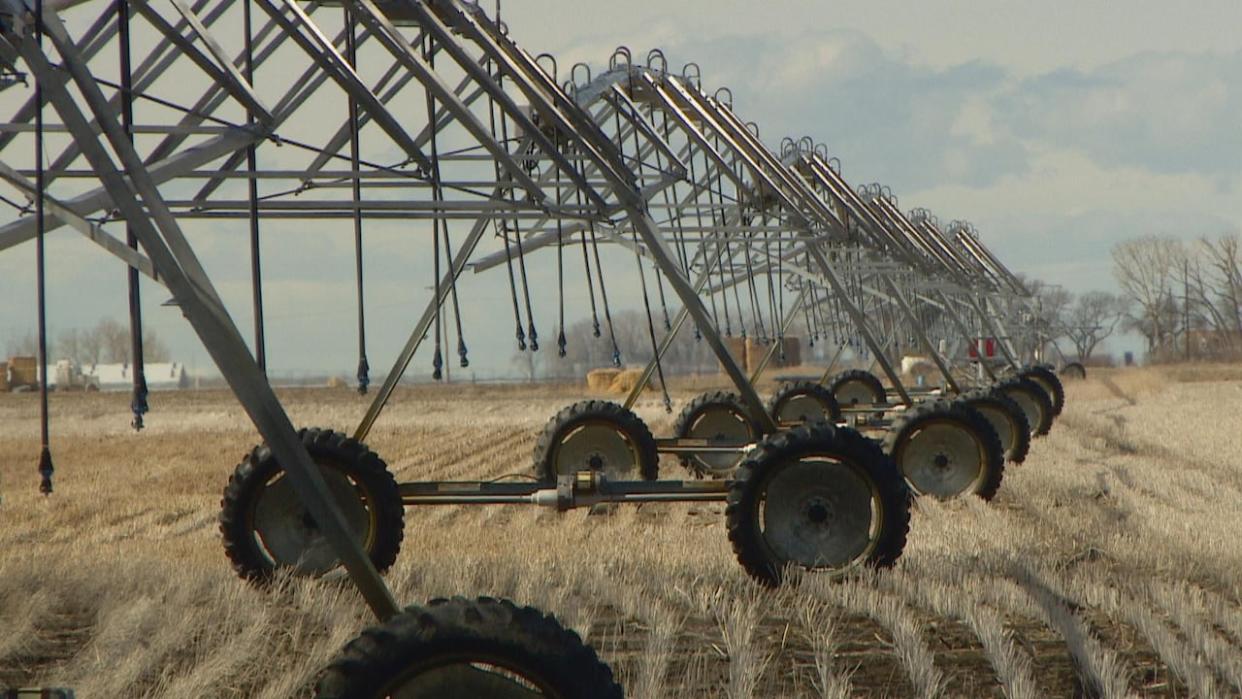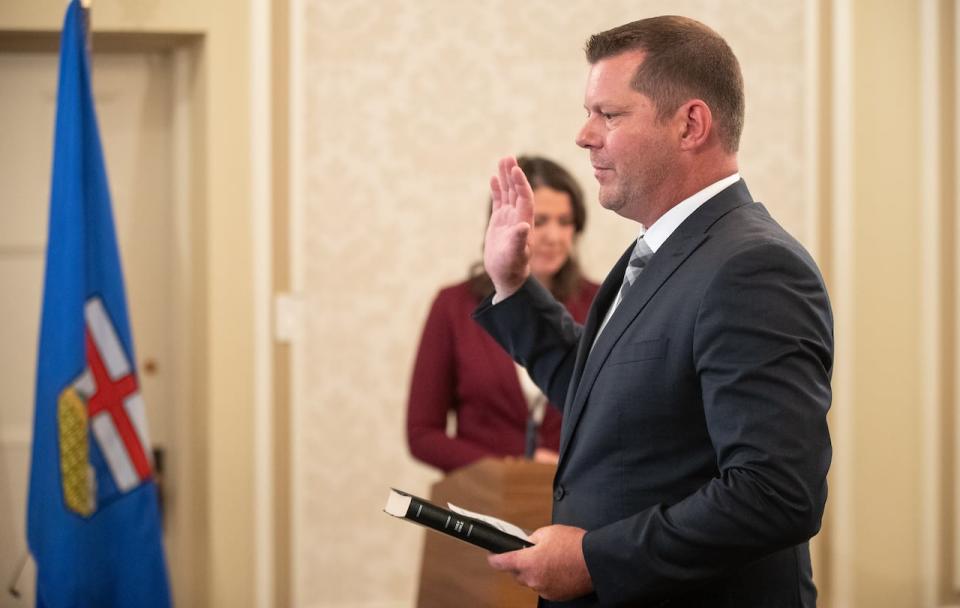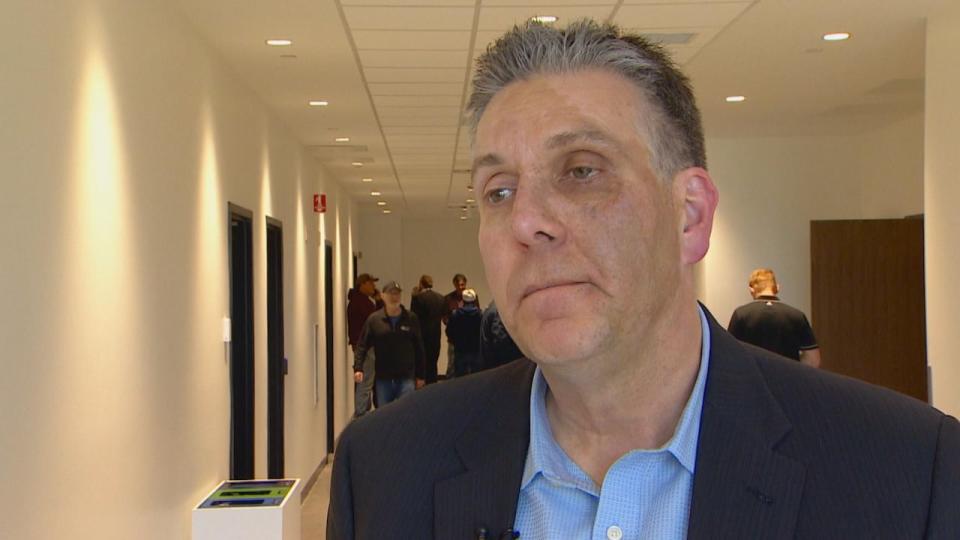Province commits to irrigation infrastructure upgrades to 'do more' with dwindling water supply

As concerns about drought in Alberta continue, the provincial government is hoping upgrades to irrigation infrastructure will help irrigation districts and farmers do more with the dwindling water supply.
In a $19-million commitment to the Irrigation Rehabilitation Program, the province aims to help Alberta's 11 irrigation districts expand and modernize infrastructure to send water to farmers more efficiently. It's a $5.5-million increase from 2023.
In a news conference, Minister of Agriculture and Irrigation RJ Sigurdson said upgrades will mean the province can use the same amount of water to irrigate even more land.
"Investing in these projects now will help counter dry conditions and increase the resiliency of our agricultural sector," said Sigurdson.
"Irrigation districts can use this funding for planning, engineering and construction of infrastructure upgrades like converting canals to pipelines to reduce water loss," he said.
Sigurdson said about 9.2 kilometres of open canals were converted to pipelines under the program in 2022.

Agriculture and Irrigation Minister RJ Sigurdson being sworn into cabinet in this file photo. On Tuesday, he announced a $19-million commitment to the province's Irrigation Rehabilitation Program. (Jason Franson/The Canadian Press)
The announcement comes as the government and industry pitch a number of ideas to meet water needs in the face of a severe drought, with a dry winter affecting snowpack and reservoir storage.
Earlier this month, Canada's biggest irrigation district told irrigators they'd get half the amount of water to allocate to farmers that they would get in a good year — in part to avoid shortages.
Meanwhile, less than two weeks ago, the province announced what it said are the largest water-sharing agreements in Alberta's history.
The cost-shared Irrigation Rehabilitation Program has been in place since 1969. The provincial government pays for three-quarters of the program, while irrigation districts pitch in the remainder.
Richard Phillips, vice-chair of the Alberta Irrigation Districts Association and general manager of the Bow River Irrigation District, said he's pleased to hear the announcement. He said the program has made a significant difference to the province's economy and to farmers since its inception.
So why do irrigators need more infrastructure investments if the program has been around for decades? He says the answer is simple.
"There's a lot of infrastructure — over 77,000 kilometres of canals and pipelines — and all infrastructure, whether it be for water delivery, roads and buildings, it wears out with use," said Phillips.

David Westwood, general manager of the St. Mary River Irrigation District, said he's extremely pleased with the extra funding and that it will be put to good use. (Monty Kruger/CBC)
Irrigation is a major user of the province's water supply. Alberta has the largest irrigated area in Canada, reaching about 690,000 hectares in the province. Of that, 566,000 hectares are in southern Alberta along the South Saskatchewan River Basin.
Those irrigated acres produce 28 per cent of Alberta's agricultural gross domestic product, according to the province's news release.
David Westwood, manager of the St. Mary River Irrigation District, said the money will be put to good use.
"We've got plenty of uses for these funds. We've got a long list of infrastructure projects with a district as large as ours," said Westwood in an interview with CBC News.
As his team and other irrigation districts prepare for a challenging year ahead, Westwood said he's hoping for plenty of precipitation this summer to ease irrigators' anxiety — and he's depending on Albertans, too.
"They've seen conditions like this before and they'll work their way through it. But you know, we've very happy that all Albertans are willing to pitch in to do their part to be able to conserve water and make sure we get through this drought cycle."

